

#1
Film about exhibition Farming Textiles 2023 -2024 Museum Kranenburgh
Avro Tros Kunst. Nu te zien!
https://npo.nl/start/serie/nu-te-zien/seizoen-8/nu-te-zien_49/afspelen
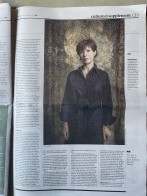

#1
Cultureel Supplement NRC
Lucette Ter Borg about the exhibition Farming Textiles in Museum Kranenburgh.
Dutch Television Avro Tros Kunst. Nu te zien!
https://npo.nl/start/serie/nu-te-zien/seizoen-8/nu-te-zien_49/afspelen
Volkskrant by Janna Reinsma *****
Trouw by Joke de Wolf
Radio
Nooit Meer Slapen
Springvossen


400 cm x 400 cm
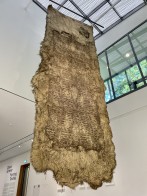

800 cm x 300 cm
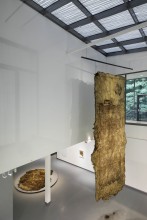

#3
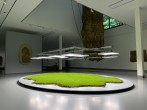

#4


#5
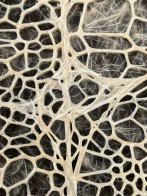

#6
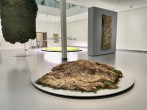

#7


600 cm x 400 cm
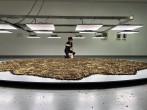

#9
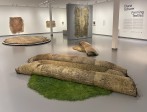

#10
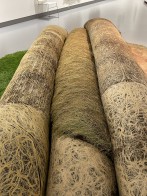

#11


#12
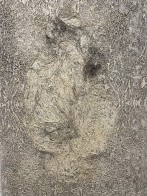

#13
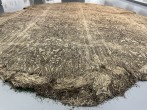

600 cm x 450 cm
1 Oct 2023 – 8 April 2024
In this solo exhibition, Farming Textiles, Diana Scherer reflects on humankind’s capacity and constraints in influencing nature while also highlighting the contemporary detachment between humans and the natural world. Farming Textiles showcases many recent works and features an installation of textiles ‘in the making’, allowing visitors to follow its growth process.
Curator Colin Huizing
Avro Tros Kunst Nu te zien!:
https://npo.nl/start/serie/nu-te-zien/seizoen-8/nu-te-zien_49/afspelen
https://www.kranenburgh.nl/tentoonstelling/129/diana-scherer-farming-textiles


#1


#2


#3
6. Biennale Reset Now! August 6 2023
Invited are 27 national and international contemporary artists who work at the interface of science, technology and art. Their works integrate complex themes and techniques such as AI, cybernetics, augmented reality and bio art. The exhibition “resetNOW!” presents itself as an experiment on aesthetics and technology. The aim is to show synergies and competences and to present a multifaceted picture of artistic discourse and production. In doing so, the relationship between science, art and society as well as the dissolution of boundaries will be addressed. The works of the artists invite the visitors to a parcours that condenses this theme kaleidoscopically.
Artists: Alexandra Bircken, Birthe Blauth, Tatjana Busch, Louisa Clement, Ursula Damm, Jana Debrodt, Nausikaa Hacker, Kelly Heaton, Alexandra Hendrikoff, Barbara Herold, Franka Hörnschemeyer, Notburga Karl, Brigitte Kowanz, Alicja Kwade, Julia Lohmann, Peggy Meinfelder, Anna Pasco Bolta, Nana Petzet, Anne Pfeifer, Sophia Pompéry, Rasha Ragab, Diana Scherer, Susanne Schütte-Steinig, Selma Selman, Catharina Szonn, Susanne Wiegner and Anne Wodtcke.


#1
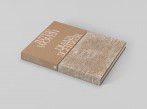

#1
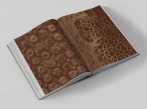

#2


#3
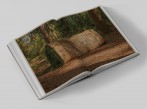

#4
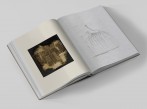

#5
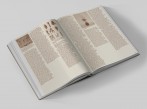

#6
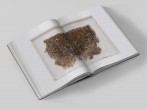

#7


#8
Interwoven – Exercises in Rootsystem Domestication
Awarded with Best Dutch Book Designs 2023
ADC Awards 2024 Gold winner
For the past eight years, Scherer has focused on developing the interdisciplinary project Interwoven. This publication will discuss research, new craft and its relevance to biotechnology in addition to the artworks. Contemplative essays will play a central role in the conceptual design. Authors are Giovanni Aloi, Judith Elisabeth Weiss, Phillip Fimmano, Colin Huizing, Jiwei Zhou TU Delft and Norbert Peeters. In their essays, the five authors from the disciplines of art, design and botany reflect on the different facets of the project. In 2015, Scherer began developing the technique Interwoven from idea to material, grown dress – sculptures to large-scale installations.
https://www.japsambooks.nl/products/interwoven-diana-scherer
On the Cultural Performance of Destruction, Uprooting, Annihilation
Diana Scherer sets in motion a kind of dialectic of cultural forms and cultural behaviour in her art in the interplay of collaboration with nature and the opposing mastery over nature. She not only spreads out the lush verdant green of caring horticultural work for us to witness – but also the opposite – destroying what she tended beforehand. The carpets of grass devotedly grown by the gardener therefore hardly differ, in terms of plant physiology, from a meadow that grows naturally. Two spheres can be differentiated from one another phenomenally – one of latency and one of manifestation. The underground sphere comprises the network of roots, the sphere that is above-ground displays the abundant growth and lush verdancy. The next step of Scherer’s artistic work draws our attention to the hidden world of the roots. At the end of the growing phase follows what the artist terms ‘the harvest’, again resorting to agricultural metaphors. A radical act lies behind the harmless expression, a procedure that literally zeroes in on the roots of things – the roots are cut off and then the carpet of root systems is lifted out of the ground. The harvest of the roots presents a drastic image of the inversion of cultural history, an image that has also political implications. The domestication of plants and the associated practice of harvesting represent a key turn in the history of humankind since it began to settle the land in the neolithic revolution, literally establishing roots. In face of the impact of life depending increasingly on technology, the ruthless exploitation of the Earth as the other side of the coin of harvesting and the increase in human migration make Scherer’s artworks appear as if they were presenting the other side to the history of cultivation.
From the Essay: On Roots and Men: Interwoven Narratives in the Age of Hybrid Realities
by Judith Elisabeth Weiss and Herbert Kopp Oberste Brink
Contributing Author:
Giovanni Aloi, Chicago
Colin Huizing
Philip Fimanno Paris, New York
Judith Elisabeth Weiss & Herbert Kopp Oberste Brink, Berlin
Jiwei Zhou, Delft
Norbert Peters, Leiden
Publisher: Jap Sam Books 2023. https://www.japsambooks.nl
Design: Mainstudio https://mainstudio.com
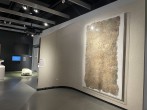

#1
Plantrootweaving tapestry 180cm x 300cm
“Gene Cultures” MIT Museum Cambridge, Massachusetts, USA
2nd October 2022 ongoing
It’s our F***ing Backyard - Material Futures - Stedelijk Museum Amsterdam 26 mei – 4 september 2022
